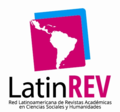Uso de inteligencia artificial, drones y biometría en las operaciones policiales: una revisión sistemática de sus implicaciones éticas y legales
DOI:
https://doi.org/10.59956/escpograpnpv4n2.4Palabras clave:
Inteligencia artificial (IA), drones, biometría, operaciones policiales, criminología predictiva, tecnología policialResumen
El estudio analiza el uso de la inteligencia artificial (IA), drones y sistemas biométricos en operaciones policiales, evaluando sus beneficios operativos y las implicaciones éticas y legales de su implementación. Se empleó una metodología cualitativa y descriptiva mediante una revisión sistemática de la literatura en bases de datos académicas de Ebsco, Web of Science, y Google Scholar, seleccionando 12 estudios publicados entre 2015 y 2024. Los resultados evidencian que estas tecnologías han optimizado la vigilancia y la identificación de sospechosos, mejorando la eficiencia y reduciendo costos. No obstante, su implementación conlleva riesgos, como sesgos algorítmicos, vulneración de la privacidad y vigilancia masiva. Asimismo, la falta de regulación ha generado incertidumbre jurídica y preocupación sobre su uso indiscriminado. Las conclusiones destacan la necesidad de establecer marcos normativos claros y mecanismos de supervisión que garanticen la transparencia y el respeto a los derechos humanos.
Descargas
Citas
Access Now. (2024). Radiografía normativa: ¿Dónde, qué y cómo se está regulando la inteligencia artificial en América Latina? Access Now. https://accessnow.org
Alkhazraji, I. y Yahya, M. (2024). The Effect of Big Data Analytics on Predictive Policing: The Mediation Role of Crisis Management. Revista De Gestão Social E Ambiental, 18(2). https://doi.org/10.24857/rgsa.v18n2-119
Amoore, L. (2013). The Politics of Possibility: Risk and Security Beyond Probability. Duke University Press. https://doi.org/10.2307/j.ctv11sms8s
Axon sets up Ethics Board to tackle user fears (2018). Biometric Technology Today, 2018(5), 3. https://doi.org/10.1016/S0969-4765(18)30061-4
Brantingham, P., Valasik, M., y Mohler, G. (2018). Does Predictive Policing Lead to Biased Arrests? Results From a Randomized Controlled Trial. Statistics and Public Policy, 5(1), 1–6. https://doi.org/10.1080/2330443X.2018.1438940
Buolamwini, J., y Gebru, T. (2018). Gender Shades: Intersectional Accuracy Disparities in Commercial Gender Classification. Proceedings of Machine Learning Research, 81, 77-91. https://proceedings.mlr.press/v81/buolamwini18a/buolamwini18a.pdf
Cath, C. (2018). Governing artificial intelligence: ethical, legal and technical opportunities and challenges. Philosophical Transactions of the Royal Society A: Mathematical, Physical & Engineering Sciences, 376(2133), 1–8. https://doi.org/10.1098/rsta.2018.0080
Cawthorne, D. y Robbins-van Wynsberghe, A. (2020). An Ethical Framework for the Design, Development, Implementation, and Assessment of Drones Used in Public Healthcare. Science and Engineering Ethics, 26(5), 2867–2891. https://doi.org/10.1007/s11948-020-00233-1
Clausius, K., Kenny, E., y Crawford, M. J. (2023). BILL S-231: The Ethics of Familial and Genetic Genealogical Searching in Criminal Investigations. Canadian Journal of Bioethics / Revue Canadienne de Bioéthique, 6(3/4), 44–56. https://doi.org/10.7202/1108003ar
Cohen, L. y Felson, M. (1979). Social Change and Crime Rate Trends: A Routine Activity Approach. American Sociological Review, 44(4), 588–608. https://doi.org/10.2307/2094589
Cooper I, y Yon J. (2019) Ethical issues in biometrics. Sci Insigt., 30(2):63-69. http://dx.doi.org/10.15354/si.19.re095
Custers, B. (2016). The future of drone use: Opportunities and threats from ethical and legal perspectives. Springer.
Elguera, F. (2024). Uso de drones en las operaciones policiales para mejorar el patrullaje integrado y combatir la inseguridad ciudadana. Revista Escpogra PNP, 4(1), 73–83. https://doi.org/10.59956/escpograpnpv4num1.5
Eubanks, V. (2018). Automating inequality: How high-tech tools profile, police, and punish the poor. St. Martin's Press.
Ferguson, A. (2017). The rise of big data policing: Surveillance, race, and the future of law enforcement. New York University Press New York.
Finn, R. y Wright, D. (2012). Unmanned aircraft systems: Surveillance, ethics and privacy in civil applications. Computer Law & Security Review, 28(2), 184-194. https://doi.org/10.1016/j.clsr.2012.01.005
Floridi, L. y Taddeo, M. (2016) What is data ethics? Phil. Trans. R. Soc. A. 374(2083). http://doi.org/10.1098/rsta.2016.0360
Galbally, J., Marcel, S. y Fierrez, J. (2014). Biometric antispoofing methods: A survey in face recognition. IEEE Access, 2, 1530-1552. https://doi.org/10.1109/ACCESS.2014.2381273
García-Puig, J. (2024). La expansión del uso estatal de las tecnologías biométricas: una mirada crítica. Panorama social, (39), 117-128. Leiden University. https://dialnet.unirioja.es/servlet/articulo?codigo=9695471
Garvie, C., Bedoya, A. y Frankle, J. (2016). The perpetual line-up: Unregulated police face recognition in America. Georgetown Law Center on Privacy & Technology. https://www.perpetuallineup.org/report
Gentzel, M. (2021). Biased Face Recognition Technology Used by Government: A Problem for Liberal Democracy. Philosophy & Technology, 34(4), 1639–1663. https://doi.org/10.1007/s13347-021-00478-z
Heubl, B. (2019). An Ethical Balancing Act. Engineering & Technology (17509637), 14(10), 62–64. https://doi.org/10.1049/et.2019.1009
Hildebrandt, M. (2015). Smart technologies and the end(s) of law: Novel entanglements of law and technology. Edward Elgar Publishing. https://doi.org/10.4337/9781849808774
Jain, A., Ross, A., Nandakumar, K. y Swearingen, T. (2020). Introduction to biometrics. Springer Nature. https://doi.org/10.1007/978-3-031-61675-4
Koslowski, R., y Schulzke, M. (2018). Drones along borders: Border security UAVs in the United States and the European Union. International Studies Perspectives, 19(4), 305-324. https://doi.org/10.1093/isp/eky002
Lum, K. y Isaac, W. (2016) To Predict and Serve?, Significance, 13(5), 14–19, https://doi.org/10.1111/j.1740-9713.2016.00960.x
Marolla, E. (2024). La inteligencia artificial en el diseño: Apocalipsis o nueva era. Recuperado de https://books.google.com.pe/books?id=ECwmEQAAQBAJ
Mislove, A. (2024, noviembre 19). Hay empresas tecnológicas con una influencia alucinante sobre cómo hablamos y pensamos. El País. https://elpais.com/tecnologia/2024-11-19/alan-mislove-investigador-hay-empresas-tecnologicas-con-una-influencia-alucinante-sobre-como-hablamos-y-pensamos.html
Nawawi, A., Budianto, A., y Sara, R. (2024). Legal Uncertainty in Criminal Law Enforcement through the Utilization of Artificial Intelligence Technology in Indonesia. Asian Journal of Engineering, Social & Health (AJESH), 3(7), 1455–1464. https://doi.org/10.46799/ajesh.v3i7.362
Noble, S. (2018). Algorithms of Oppression: How Search Engines Reinforce Racism. NYU Press. https://doi.org/10.2307/j.ctt1pwt9w5
Oficina del Alto Comisionado de las Naciones Unidas para los Derechos Humanos (ACNUDH). (2023, 30 de noviembre). La IA generativa y sus riesgos para los derechos humanos. https://www.ohchr.org
Purtova, N. (2018). The law of everything. Broad concept of personal data and future of EU data protection law. Law, Innovation and Technology, 10(1), 40–81. https://doi.org/10.1080/17579961.2018.1452176
Rousseau, J. (l962) El contrato social o principios del derecho político.
Royakkers, L., Timmer, J., Kool, y L. et al (2018) Societal and ethical issues of digitization. Ethics Inf Technol 20, 127-142. https://doi.org/10.1007/s10676-018-9452-x
Sorell, T. (2024). AI-related data ethics oversight in UK policing. Policing: A Journal of Policy & Practice, 18, 1–9. https://doi.org/10.1093/police/paae016
Tene, O. y Polonetsky, J. (2013). Big Data for All: Privacy and User Control in the Age of Analytics. Northwestern Journal of Technology and Intellectual Property, 11, 239-273. https://scholarlycommons.law.northwestern.edu/njtip/vol11/iss5/1/
Trotta, A., Ziosi, M. y Lomonaco, V. (2023) The future of ethics in AI: challenges and opportunities. AI & Soc 38, 439-441. https://doi.org/10.1007/s00146-023-01644-x
Türk, V. (2023, 30 de noviembre). Declaraciones sobre biometría y protección de la privacidad en Europa. Oficina del Alto Comisionado de las Naciones Unidas para los Derechos Humanos. https://www.ohchr.org
Türk, V. (2023, 30 de noviembre). Türk pide una gobernanza que preste atención a los riesgos de la inteligencia artificial y se centre en los derechos de las personas. Discurso en la Cumbre sobre Inteligencia Artificial Generativa y Derechos Humanos. Oficina del Alto Comisionado de las Naciones Unidas para los Derechos Humanos. Recuperado de https://www.ohchr.org
UNESCO (2021). Recommendation on the ethics of artificial intelligence. París: Organización de las Naciones Unidas para la Educación, la Ciencia y la Cultura. Recuperado de https://unesdoc.unesco.org.
UNESCO (2024). México: Evaluación del estadio de preparación de la inteligencia artificial. https://articles.unesco.org/sites/default/files/medias/fichiers/2024/07/M%C3%A9xico.%20Evaluaci%C3%B3n%20del%20estad%C3%ADo%20de%20preparaci%C3%B3n%20de%20la%20inteligencia%20artificial.pdf
Wiener, N. (1948). Cybernetics: Or control and communication in the animal and the machine. MIT Press
Zuboff, S. (2019) The Age of Surveillance Capitalism: The Fight for a Human Future at the New Frontier of Power. New York: PublicAffairs.
Zwitter, A. (2014). Big Data ethics. Big Data & Society, 1(2). https://doi.org/10.1177/2053951714559253
Descargas
Publicado
Cómo citar
Número
Sección
Licencia
Derechos de autor 2025 Revista Escpogra PNP

Esta obra está bajo una licencia internacional Creative Commons Atribución 4.0.























